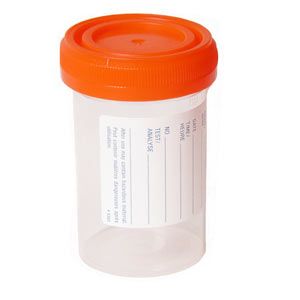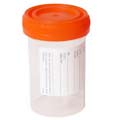Description of the test
Testing urine (urinalysis) provides information about a person's health and may identify possible reasons for symptoms one is experiencing.
Urinalysis provides clues that may point towards infection, dietary issues, or specific conditions through simple laboratory analysis of its appearance, concentration, and content. Urinalysis can be used to detect or monitor a variety of conditions, including kidney disease, diabetes, or urinary tract infections (UTIs).
A sample is usually taken in a clinic, hospital, or lab and sent to a laboratory for testing. In some cases, you may need to take a urine sample at home.
How often should the test be performed?
The frequency of this test is recommended by your doctor. It may be suggested for a specific purpose or it may be part of a routine yearly exam.
Why is this test performed?
Doctors often request this test during yearly physical examinations to provide information about overall health. A urine test may also be used to help with the diagnosis or monitoring of:
- pregnancy complications
- an infection of the urinary tract - you may suspect that you have a UTI if you notice pain or burning during urination, increased frequency of urination, blood in the urine, or changes in urine color or smell
- kidney disease
- diabetes
Are there any risks and precautions?
If you have a UTI, providing a sample for this test may cause some discomfort. Wash your hands before and after collecting the sample. Follow instructions closely to avoid contaminating your urine sample.
What happens during the test?
To avoid contaminating the sample, it's important to wash and dry your hands before beginning the test, and avoid touching the inner surface of the urine collection cup. You may be instructed to clean the genital area with antiseptic towelettes (or warm soapy water followed by a thorough rinse) to further reduce the chance of contamination.
One method of collecting a urine sample for testing is the "clean-catch" or "midstream" method. Once you are ready, begin urinating (women should hold the genital fold of skin apart while doing so, men should retract their foreskin if not circumsized) and after a few seconds, collect the sample in the container provided. Make sure that the rim of the container does not touch your genital area, the toilet, or any other surfaces. Fill the container. When you are finished, seal the sample container with the lid. Wash your hands and place the sample in the collection bin or leave it with the laboratory technician or nurse. If you are collecting urine at home, you should deliver it to a lab within an hour. If this is not possible, you should refrigerate the sample.
Sometimes, the doctor needs to check certain characteristics of the urine your body is producing at the moment. Since the kidneys produce urine, a possible reason for requesting this test is to monitor kidney function. First, you need to empty your bladder, and then drink a large amount of water. After about half an hour, you collect the sample using the method above, wash your hands, and place the sample in the collection bin or leave it with the laboratory technician or nurse.
If further testing is required, you may be asked to collect all of your urine over a 24-hour period in a special container.
How should I prepare for this test?
You may need to make some changes to your normal routine to make sure the test results are accurate. Follow the instructions provided by your doctor or health care professional.
Tell your doctor or prescriber about all prescription, over-the-counter (non-prescription), and herbal medications you are taking as some may affect the colour of the urine or the test results (e.g., diuretics, iron, rifampin, phenazopyridine, phenytoin, vitamin B supplements, high doses of vitamin C, and certain antibiotics).
Also tell them about any medication allergies and medical conditions you may have. Ask your doctor or pharmacist whether you need to stop taking any of your medications before the test.
Women who are menstruating should tell their doctor, as it may affect the test results if blood enters the urine sample.
What can I expect after the test?
Wash your hands thoroughly with soap and water after collecting the urine sample.
Results
Interpreting results requires analysis of the color, clarity, odour, pH, protein content, glucose (sugar) levels, presence of bacteria, and the presence or absence of certain chemicals or cells in the urine. This analysis is usually done in a laboratory and a report is sent to your doctor with the results.
Some results may be available almost immediately after the test, while others may require more time. Ask your doctor when your test results should be available.
Urinalysis is not a definitive diagnostic test. Depending on the reason your doctor has ordered this test, abnormal results may or may not require follow-up.
All material copyright MediResource Inc. 1996 – 2024. Terms and conditions of use. The contents herein are for informational purposes only. Always seek the advice of your physician or other qualified health provider with any questions you may have regarding a medical condition. Source: www.medbroadcast.com/procedure/getprocedure/Urinalysis



